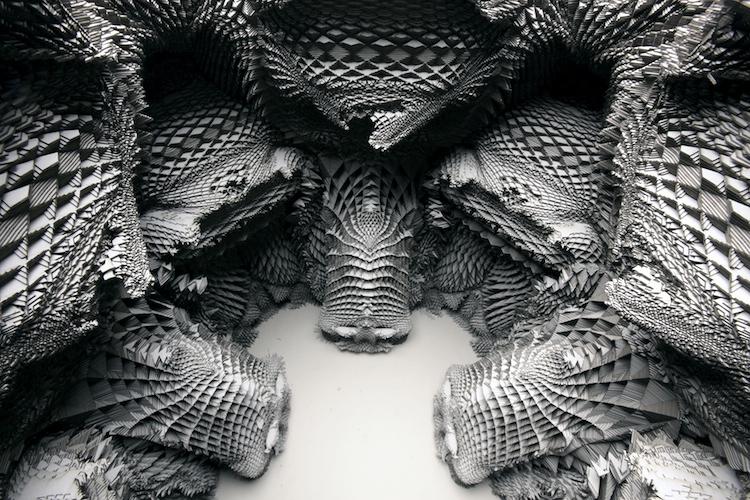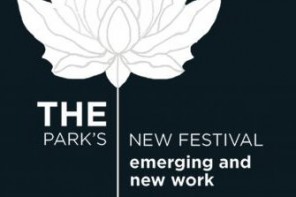It is no secret that technology has thoroughly infiltrated our lives. Emails have replaced handwritten letters, GPS navigation has turned paper maps into collectibles and romance is more emoji than emotion. After all, why rendezvous when you can IM and woo?
In such a setting, it doesn’t come as a surprise that art too has adapted with the times. There is no denying the beauty of a brilliantly painted canvas or a delicately chiselled sculpture but thanks to technology, these are now bigger, bolder and more beautiful than ever. We first came across technology in art when we featured the cover of album TRU, which was created using a harmony of paint, speakers and sound, in our previous article about quirky album art. Since then, we’ve been scouring the interwebs for similar creations. We weren’t disappointed with the results and you won’t be either when you browse through the following list of artists who create beauty with technology.
-
Eye For Art
You might have heard of on-the-spot portraits but a by-the-eyeball portrait? Now that’s a first. Artist Graham Fink uses an eye tracker to draw live portraits with—you guessed it—his eyes. Provided by Tobii Technology, the tracker uses infrared light to track eye movements which are then depicted as lines on a computer screen. His exhibition showcasing these portraits, Drawing With My Eyes, was open for viewing at The Riflemaker gallery in London during March, 2015. The haphazard, broken lines add a touch of eeriness to these portraits. The making-of video is fascinating because it appears as if Fink just sits in front of a computer, completely motionless, but on the projected screen in the background, a portrait emerges with every movement of his eyes.
Image courtesy—Graham Fink
-
The algorithm of art
Zurich-based computational architect Michael Hansmeyer uses algorithms and computation to create architectural forms which supersede the standard. At 9 feet and 2000 pounds, his latest project, Subdivided Columns – A New Order is generated by reiterating a subdivision algorithm and then slicing each section of cardboard delicately with a laser. These columns have more than 16 million facets each and are created by stacking cut sheets on top of one another which are held together by poles that run through the common core. Photographs of his physical prototype were mistaken for computer renderings by many, that’s how much dizzying detail he has put into these columns.
Image courtesy—Fastco
-
Art-chaic
Nick Gentry doesn’t paint with technology, he paints on technology. The British artist uses archaic bits of technology (floppy disks, film negatives, x-ray sheets and more) and turns them into a platform for quirky portraits. He sources his base materials from the public by encouraging them to mail vintage tech items to his studio. Gentry calls it a ‘social art project’ and works on highlighting the memories held by these previously-owned objects in his final piece. This interesting method of involving the community in his design process adds a certain twinge of shared loss to his works—everyone who sends in a floppy disk or a film negative finds reminiscences of an era gone by in them. This blend of nostalgia with contemporary design is what makes his art so intriguing.
Image courtesy—Nick Gentry
-
Rock, Paper, Laser
While most people think of technology as a medium to create more efficiently, Eric Standley begs to differ. A professor at Virginia Tech, he uses lasers to cut paper into beautiful shapes which are stacked together to create intricate 3-D designs. In deviating from traditional techniques of art and employing technology, he finds that it makes him feel more connected to his work. In this insightful video, he talks about his inspiration behind these Gothic architectural designs and how he stumbled upon the idea of stacking cut paper to create patterns. Standley’s hyper-realistic sculptures are akin to stained glass windows and are a wonderful connexion of art history and technology.
Image courtesy—Eric Standley
-
LED-ing the way
‘Water’ and ‘graffiti’ are two words that you would never expect to hear together but artist Antonin Fourneau teams them up with another unlikely companion—light. Water Light Graffiti is a project that aims to create a material made of LEDs which lights up when it is touched by water. After a few weeks of working in residence at Digitalarti Artlab, Fourneau unveiled the project to the public of Poitiers, France in the form of a wall made out of LEDs which lit up when touched with water. People used wet paintbrushes, hands, buckets of water and water guns to play around with the wall and ended up creating beautiful illuminated art. The WLG website talks about how rainy days would turn the material into a fireworks display—that’s something we would like to witness after watching this video of the wall in action.
Image courtesy—Water Light Graffiti Facebook page
-
History meets future
Apart from being the home of Vincent van Gogh from 1883-1885, the city of Nuenen, Netherlands is now home to the Van Gogh-Roosegarde Bicycle Path which is as fascinating as the artist himself. Brought to life by Studio Roosegarde (whose work we’ve featured before), the kilometre-long path is described as a junction of history and future. It is easy to see hints of The Starry Night in the swirling patterns of the path. The bicycle track is lit up by using a special paint that charges in daylight and embedded LEDs which draw power from a nearby solar array. This video of the path in action makes us want to grab our bicycles and head on over to Nuenen and experience this wonderful manifestation of poetic technology for ourselves.
Image courtesy—Studio Roosegarde
Technology’s essence in our lives is undisputable. So far, it has only been regarded as a tool for increasing efficiency but as artists all over the world are proving, technology doesn’t just simplify, it makes life more beautiful.























